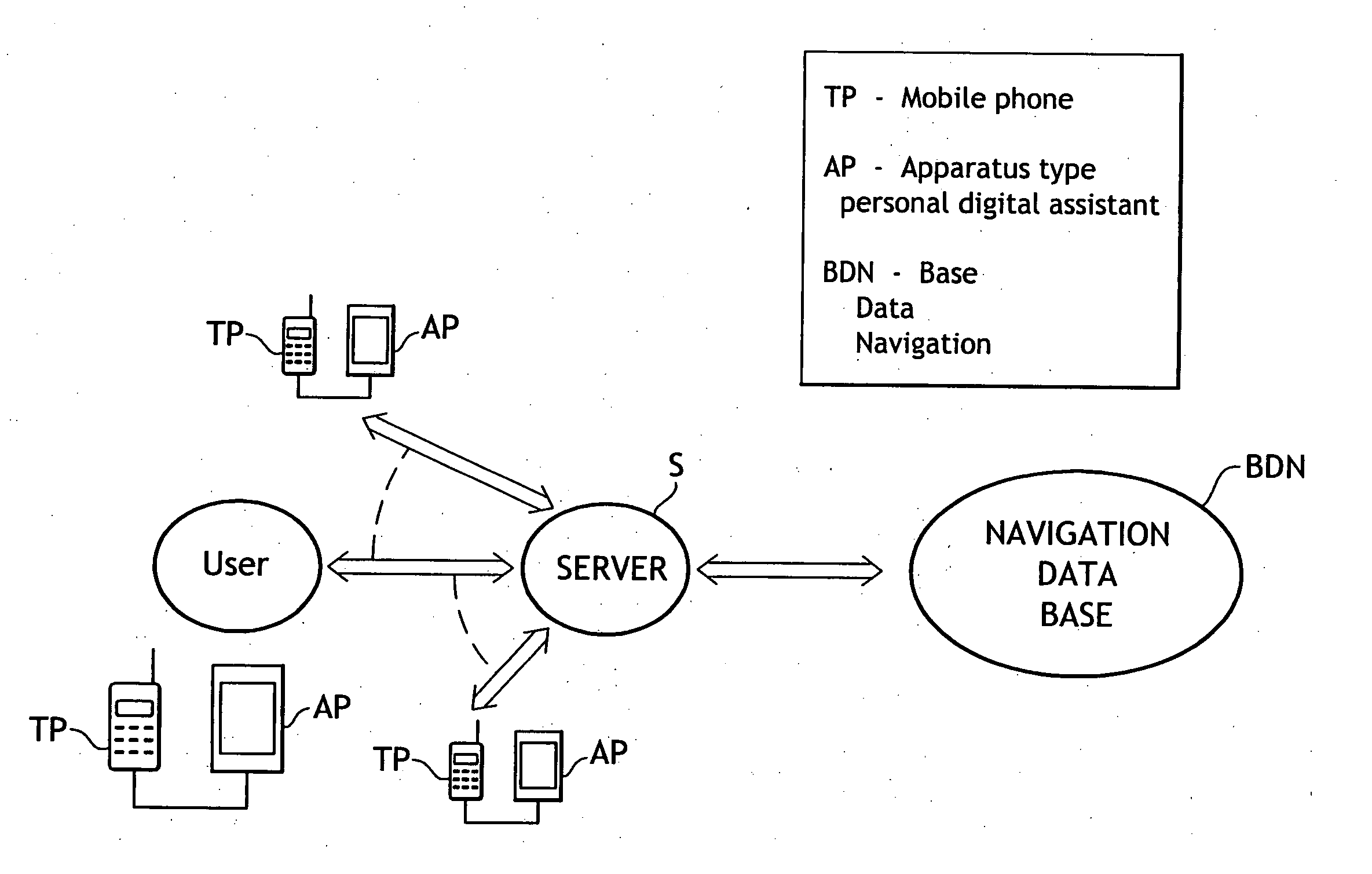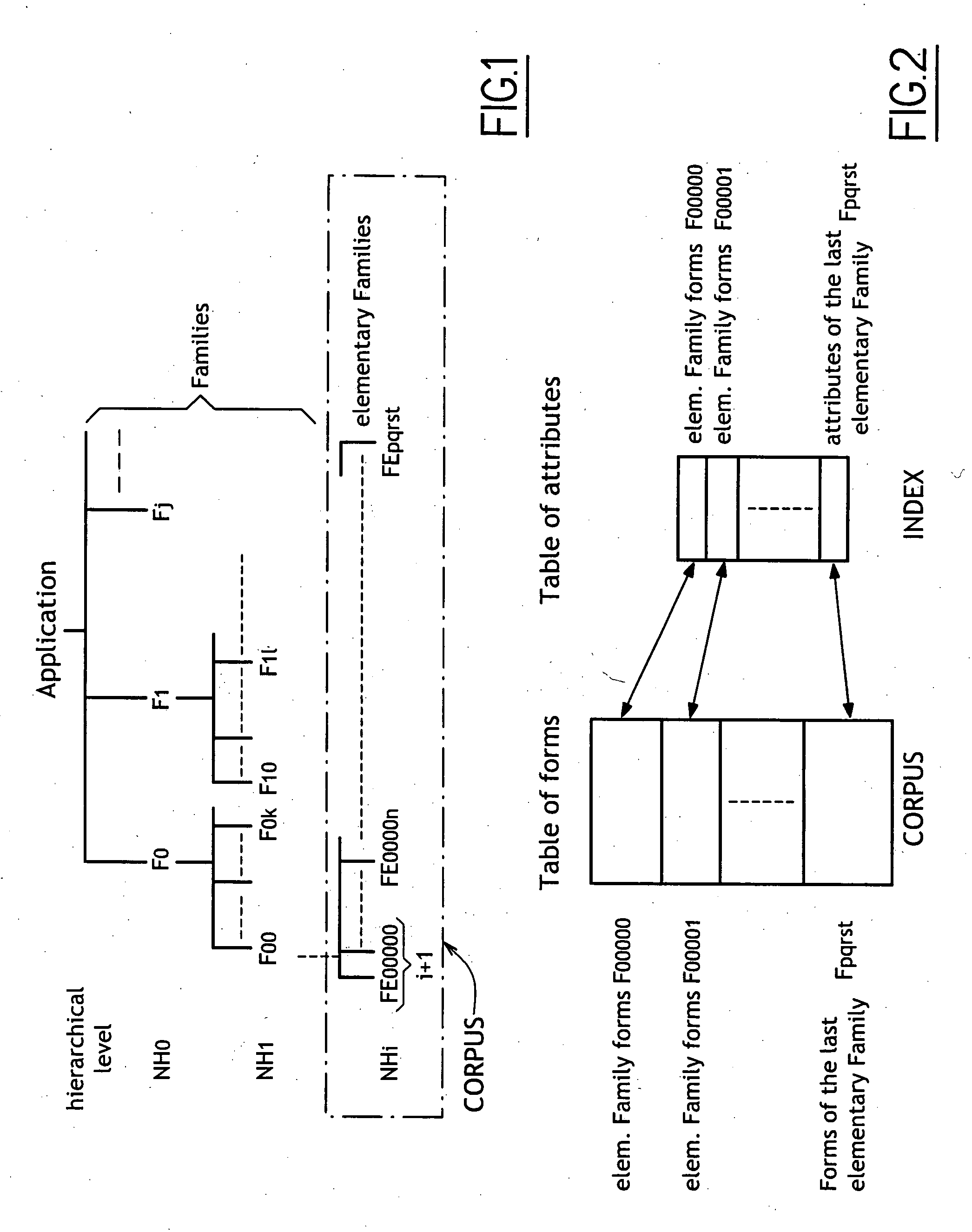Method and system for processing spatially-referred information such as cartographic information, applications and apparatus implementing said method
a technology of spatial data and information, applied in the field of methods for processing spatial data, can solve the problems of slow processing that is hardly admissible, large size of spatial data bases, complex systems, etc., and achieve the effect of increasing the efficiency of spatial data base processing
- Summary
- Abstract
- Description
- Claims
- Application Information
AI Technical Summary
Benefits of technology
Problems solved by technology
Method used
Image
Examples
Embodiment Construction
[0080] First, the main principles on which the method according to the invention is based, are presented, with practical examples of implementation.
[0081] Two types of information are considered: [0082] topologic information: [0083] the geometric form [0084] the position [0085] attributes: [0086] formal (or aspect) [0087] semantic (or functional) [0088] of graphic representation (display)
[0089] The hierarchic gathering of objects for a given application leads to an arborescent organization, as illustrated by FIG. 1, that uses the three following notions: [0090] 1. hierarchic level NH [0091] 2. generic family F, without any precision on the level, and [0092] 3. elementary family FE, which is the family with the lowest hierarchic level.
[0093] In most of the applications, the objects are defined by several geometric forms. For reasons of efficiency and flexibility, it is recommended to gather into distinct elementary families the simple forms (line, arc, ellipses), the complex famil...
PUM
 Login to View More
Login to View More Abstract
Description
Claims
Application Information
 Login to View More
Login to View More - R&D
- Intellectual Property
- Life Sciences
- Materials
- Tech Scout
- Unparalleled Data Quality
- Higher Quality Content
- 60% Fewer Hallucinations
Browse by: Latest US Patents, China's latest patents, Technical Efficacy Thesaurus, Application Domain, Technology Topic, Popular Technical Reports.
© 2025 PatSnap. All rights reserved.Legal|Privacy policy|Modern Slavery Act Transparency Statement|Sitemap|About US| Contact US: help@patsnap.com



